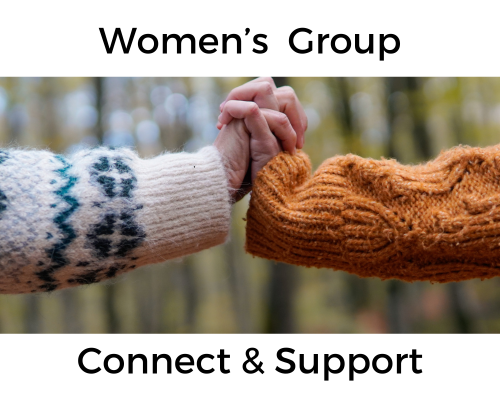
Find Inner Clarity with Maplewood Counseling
Find Inner Clarity with Maplewood Counseling
Do You Need More Clarity in Your Life?
Find Inner Clarity with Maplewood Counseling
Do You Need More Clarity in Your Life?
Inner clarity can help you navigate life’s challenges with confidence and purpose. By understanding your thoughts, emotions, and values, you can make decisions that align with your true self. However, achieving this clarity is not always easy. That’s where Maplewood Counseling comes in.
At Maplewood Counsrling, we believe that everyone has the ability to find inner clarity, and we are here to support you on your journey. Our compassionate team offers a range of services aimed at helping you connect with your inner self and build resilience for long-term mental well-being.

Find Inner Clarity with Maplewood Counseling

Feeling overwhelmed, stuck, or unsure of your next steps in life? You’re not alone. Many adults and couples grapple with questions about their purpose, relationships, or emotional well-being. The good news is, finding inner clarity doesn’t have to be an impossible task. At Maplewood Counseling, we understand the unique struggles that come with searching for balance and peace of mind. Through our supportive techniques and expert guidance, we help individuals take meaningful steps toward mental well-being.
This blog explores the art of finding inner clarity and offers six actionable steps to help you regain focus, connect with your true self, and build a foundation for long-term mental wellness.
What’s Getting in the Way of Inner Clarity?
Life is full of responsibilities, distractions, and emotional hurdles. Maybe the path to clarity feels clouded by these daily challenges. In additon, misconceptions about clarity can make the process even harder:
- “I should have all the answers already.”
This misplaced expectation fuels self-doubt and frustration. Remember, clarity doesn’t come from having all the answers—it comes from asking the right questions.
- “Finding clarity means everything has to be perfect.”
Inner clarity isn’t about perfection. It’s about understanding your priorities and making decisions that align with your values.
- “I don’t need help to figure it out.”
The truth is, seeking guidance is a sign of strength, not weakness. Sometimes, an outside perspective can illuminate solutions you hadn’t considered.
At Maplewood Counseling, we help you untangle these misconceptions and uncover your unique path toward greater mental well-being.
6 Ways to Find Inner Clarity

1. Practice Mindfulness Exercises
When your mind feels cluttered, mindfulness is a powerful tool to bring you back to the present moment. Taking just 5–10 minutes a day to focus on your breath can reduce stress and improve your mental well-being.
Maplewood Counseling offers guided mindfulness sessions tailored to your needs. These exercises teach you how to recognize and release intrusive thoughts, helping you focus your energy on what truly matters.
Want to start simple? Close your eyes, inhale deeply for four counts, and exhale for six. Just a few cycles of this can foster calm and inner clarity.
2. Try Journaling for Reflection
Writing is one of the most effective ways to explore your thoughts and emotions. By putting pen to paper, you gain a clearer understanding of the ideas swirling in your mind.
In addtion, ournaling prompts like “What’s one thing I truly value in life?” or “What’s causing me stress right now?” can bring insight to light. At Maplewood Counseling, we encourage clients to incorporate journaling into their routines as a step toward self-discovery.
3. Harness the Power of Guided Meditation
Guided meditations offer structure if you’re finding it hard to quiet your thoughts on your own. These meditations are designed to lead you through relaxation techniques and visualization exercises that foster a deeper connection with your inner self.
Our team at Maplewood Counseling provides access to personalized guided meditations, helping clients engage their minds more intentionally and develop clarity. Whether you’re navigating a tough decision or managing stress, our meditations provide a safe, supportive space for reflection.
4. Set Boundaries and Simplify Your Life
Clutter—physical, mental, or emotional—can cloud your sense of inner clarity. When you’re spread too thin, it becomes difficult to focus on what’s important.
Take stock of your commitments and see where you can pare back. Setting boundaries with toxic relationships or overcommitted schedules creates the mental space needed to rejuvenate.
Maplewood Counseling can help guide you through the process of setting boundaries, ensuring you feel empowered and supported every step of the way.
5. Find Support in Counseling
Sometimes, achieving clarity requires a professional perspective. Working with a licensed counselor can help you uncover patterns, resolve conflicts, and build actionable strategies for your mental wellness.
Through compassionate one-on-one or couple counseling sessions, Maplewood Counseling equips you with the tools to explore challenges and implement positive changes. Many of our clients describe their counseling sessions as a safe, judgment-free space where they can openly express their true selves.
Whether it’s addressing personal growth, relationship concerns, or mental health struggles, consistent counseling sets the groundwork for lasting clarity.
6. Learn from Others’ Experiences
Hearing someone else’s story is often just the motivation we need to take the first step. At Maplewood Counseling, we’re proud to share real stories from clients who’ve experienced breakthroughs in their mental and emotional well-being:
- “Working with Maplewood helped me realize that I’m not alone in my struggles, and that clarity doesn’t happen overnight—it’s a process.”
- “The mindfulness techniques I learned here have completely changed the way I approach stress. I’m more present for my family, for myself.”
- “Journaling felt awkward at first, but now I can’t imagine my life without it. It’s like I’m uncovering a new version of myself every day.”
These stories are reminders that self-growth is possible, and every step you take brings you closer to where you want to be.
Why Ongoing Support is the Key to Long-Term Inner Clarity
Clarity isn’t a one-time achievement; it’s a practice. By continuing to engage in counseling, mindfulness, and reflective exercises, you build the resilience needed to face life’s complexities with confidence.
At Maplewood Counseling, we don’t just help you find inner clarity; we guide you in maintaining it. Through regular sessions and ongoing support, we create a foundation for lasting mental well-being, helping you face challenges with strength and self-awareness.
Take the First Step Towards Clarity
Finding inner clarity starts with a willingness to take the first step. Whether it’s trying a mindfulness exercise, starting a journal, or booking your first counseling session, every effort matters.
At Maplewood Counseling, we’re here to help you on this rewarding path. Our inclusive, compassionate team is ready to support you in uncovering your true self and building a clearer, more fulfilling life.
Contact us today to schedule a session and begin your personal clarity journey.


















